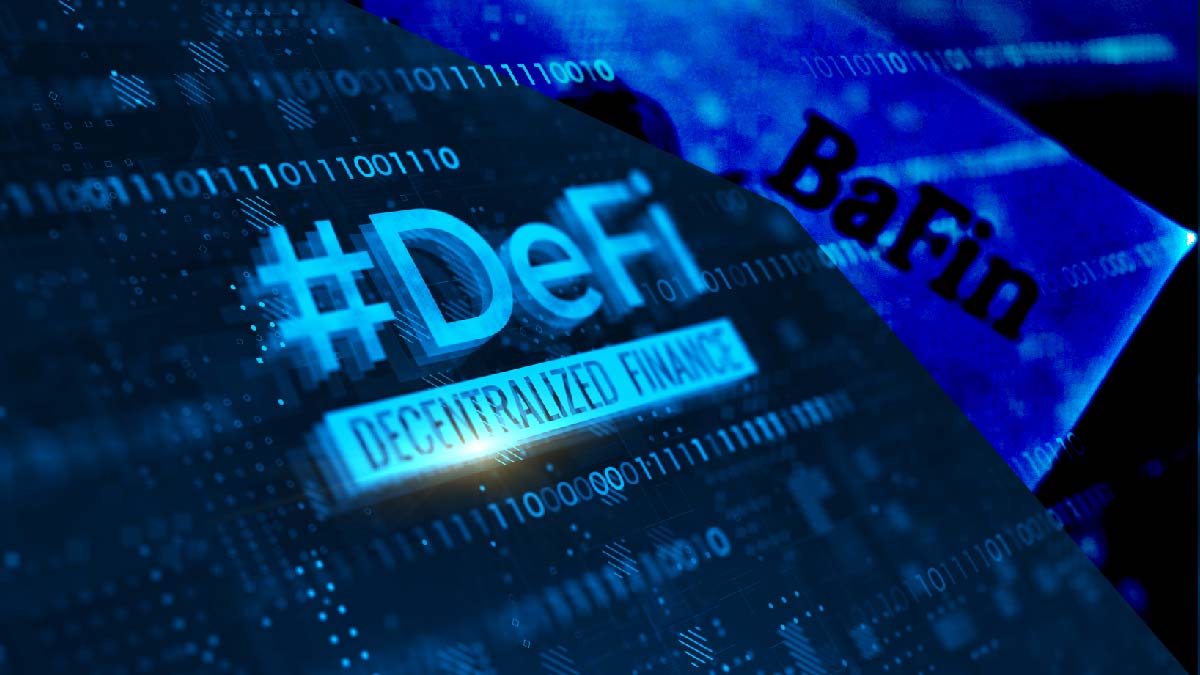Cryptocurrency
Bitcoin-mining power plant raises ire of environmentalists

An obstacle to large-scale bitcoin mining is finding enough cheap energy to run the huge, power-gobbling computer arrays that create and transact cryptocurrency. One mining operation in central New York came up with a novel solution that has alarmed environmentalists. It uses its own power plant.
Greenidge Generation runs a once-mothballed plant near the shore of Seneca Lake in the Finger Lakes region to produce about 44 megawatts to run 15,300 computer servers, plus additional electricity it sends into the state’s power grid. The megawatts dedicated to Bitcoin might be enough electricity to power more than 35,000 homes.
Proponents call it a competitive way to mine increasingly popular cryptocurrencies, without putting a drain on the existing power grid.
Environmentalists see the plant as a climate threat.
They fear a wave of resurrected fossil-fuel plants pumping out greenhouse gasses more for private profit than public good. Seeing Greenidge as a test case, they are asking the state to deny renewal of the plant’s air quality permit and put the brakes on similar projects.
“The current state of our climate demands action on cryptocurrency mining,” said Liz Moran of Earthjustice. “We are jeopardizing the state’s abilities to meet our climate goals, and we set the stage for the rest of the country as a result.”
The former coal plant, in a touristy region known for its glacial lakes and riesling wines, was converted to natural gas by Greenidge and began producing electricity in 2017. Bitcoin mining at the plant, which has a 106-megawatt capacity, started in earnest last year. The company said it was “bringing a piece of the world’s digital future” to upstate New York.
“For decades, this region has been told it would see new industries and opportunities,” Greenidge said in a prepared statement. “We are actually making it happen, and doing it fully within the state’s nation-leading high environmental standards.”
Bitcoin miners unlock bitcoins by solving complex, unique puzzles. As the value of Bitcoin goes up, the puzzles become increasingly more difficult, and it requires more computer power to solve them. Estimates on how much energy Bitcoin uses vary.
Greenidge said it mined 729 bitcoins over three months ending Sept. 30. The value of cryptocurrency fluctuates, and on Friday, one bitcoin was worth over $59,000.
Opponents are frustrated that Greenidge applied to run a power plant but are now operating a mine that is taking up more of the plant’s power.
Greenidge says mining was not part of the plan when the plant came back online and note they continue to provide power to the grid. From January through June, Greenidge said it used 58% of its power for mining.
Supporters see it as an economic boon in a part of upstate New York that could use the help. Douglas Paddock, chairman of the Yates County Legislature, testified at a public hearing this week that the plant has brought 45 high-paying jobs and made a “significant contribution” to the area through tax payments and capital investments.
Some opposition to the plant centers on the potential effects of its water withdrawals from Seneca Lake. But air quality issues have taken center stage as the state Department of Environmental Conservation reviews the plant’s air emission permits.
Greenidge has said it’s in compliance with its permits and that the plant is 100% carbon neutral, thanks to the purchase of carbon offsets, such as forestry programs and projects that capture methane from landfills.
Opponents claim the plant undercuts the state’s efforts to dramatically slash greenhouse gas emissions in the coming decades under its 2019 climate law.
A large coalition of environmental groups and other organizations this week asked Gov. Kathy Hochul to deny the air permit for Greenidge and to take a similar action to keep an existing plant near Buffalo from becoming a mining site. The coalition wants Hochul to set a “national precedent” and enact a statewide moratorium on the energy intensive “proof-of-work” cryptocurrency used by bitcoin miners.
Environmentalists estimate that there are 30 plants in New York that could be converted into mining operations.
“I really think more than anything, this plant is a significant test for whether the state’s climate law is really worth anything,” said Judith Enck, who served as the EPA’s regional northeastern U.S. administrator under President Barack Obama.
Sens. Chuck Schumer and Kirsten Gillibrand have separately asked the federal Environmental Protection Agency to exercise oversight.
Around the country, there are other power plants being used for cryptocurrency mining under different types of arrangements.
In Venango County, Pennsylvania, a generation plant that converts coal waste into power is being used to mine bitcoins and can provide electricity to the grid when needed. Stronghold Digital Mining has plans to replicate that kind operation at two other sites in Pennsylvania.
And in Montana, a coal-fired generating station is now providing 100% of its energy to Marathon Digital Holdings for bitcoin mining under a power purchase agreement.
“We had previously done what many miners do, which is you find an industrial building, set it up for mining and then you contract for power from the grid,” Marathon CEO Fred Thiel said. “And we wanted to flip that model upside down because we knew that there are lots of underutilized energy generation sources in the U.S.”
Thiel said that harmful emissions are low because of the quality of the coal and pollution controls, and that the plant would be carbon offset by the end of next year. He said his company is focused on moving toward renewable energy, saying cryptocurrency miners can provide crucial financial incentives to build more clean energy projects.
New York state has yet to make a determination on Greenidge’s permits.
Greenidge said that even if the plant ran at full capacity, its potential emissions equate to 0.23% of the state’s greenhouse gas emissions reduction target for 2030.
However, state Environmental Commissioner Basil Seggos tweeted last month that “Greenidge has not shown compliance with NY’s climate law” based on goals in that law.
“New York state is leading on climate change,” Seggos said in a prepared statement, “and we have some major concerns about the role cryptocurrency mining may play in generating additional greenhouse gas emissions.”
Blockchain - Cryptocurrency
Is Cryptocurrency Legal in India?

Whether making Cryptocurrency legal in India or not is still up for debate, but the Supreme Court asked the government to be very clear about its position. The national government is drafting a bill to control cryptocurrencies and other digital assets in India. In the Union Budget 2022, Finance Minister Nirmala Sitharaman announced that the federal government would impose a steep tax of 30% on virtual assets, such as cryptocurrencies and Nonfungible Tokens, or NFTs. Budget 2022 suggested creating a new section 115BBH to impose income tax on cryptocurrencies and other virtual assets in order to implement this crypto tax.
Is Cryptocurrency Legal in India?
According to finance minister Nirmala Sitharaman, taxing cryptocurrencies does not make them legal tender in the nation. The nation has the right to impose taxes on cryptocurrency transactions, and these taxes have hit the Indian crypto market hard. The finance minister stated that an official position on regulation wouldn’t be taken until the ongoing consultations were over.
The Directorate of Enforcement (ED) of the nation is making rapid progress with its investigation into any potential foreign exchange.
According to reports, the ED is looking into every aspect of the offshore transactions carried out by the Indian exchanges. The amount of domestic money that left India is being estimated by the Indian authorities, and is a big factor in whether to make Cryptocurrency legal in India or not. Transaction histories and the companies’ involvement with foreign exchanges are hidden from view for that reason.
When an assessee’s total income includes any income from the transfer of virtual digital assets, the proposed section 115BBH seeks to stipulate that the amount of income tax that is due is equal to the sum of the income tax that is due at the rate of 30% on such income and the amount of income tax that would have been due had the assessee’s total income been reduced by the sum of those incomes, according to the Budget 2022 Memorandum.
From Assessment Year 2023–2024, the recently proposed cryptocurrency tax will be in effect. In the upcoming fiscal year (2022–2023), all of your cryptocurrency-related income will be subject to a 30 percent tax rate. For FY 2021–2022, investors must pay taxes in accordance with the current tax regulations.
With this law, the Indian financial authorities have essentially clamped down on the newly emerged financial market due to fear of financial instability, especially given the recent crypto crash.
Prime Minister Narendra Modi stated in November that cryptocurrencies could “spoil our youth” after the central bank had repeatedly warned that cryptocurrencies could pose “serious concerns on macroeconomic and financial stability.”
This view on the dangers of cryptocurrencies comes, ironically enough, despite some pretty impressive statistics, and have been taken into consideration when discussing whether to make Cryptocurrency legal in India.
One of the largest and fastest-growing cryptocurrency markets worldwide is found in India. There are 15 domestic cryptocurrency exchanges in the nation.
According to industry data, there are between 15 and 20 million cryptocurrency owners in India, with estimated holdings worth $6 billion (€5.31 billion).
Despite this, the Indian cryptocurrency market remains under stringent scrutiny that appears to persist for the foreseeable future.
Inside Telecom provides you with an extensive list of content covering all aspects of the tech industry. Keep an eye on our Technology and Blockchain sections to stay informed and up-to-date with our daily articles.
Cryptocurrency
How Facebook’s Cryptocurrency Venture Fell to its Demise

Surely, we all remember that one time when Facebook tried to enter the cryptocurrency world to expand its influence into the decentralized universe of cryptocurrency and blockchain. But those familiar with Facebook’s cryptocurrency venture also know that the dream did not even come close to fruition. Why? Let’s just start by saying many factors led to its unfortunate doomed fate, which was put into question from the get-go, but the main one has to be the project’s failure to secure the satisfaction of federal regulators.
Facebook Crypto Coin
In its first uncovering of its ambitious venture, the initial Facebook cryptocurrency name was Libra, which later on was changed, and the crypto coin was dubbed the name Diem. A term that could mean “carpe diem,” referring to the urge to make the most of the present time and not considering the thought and consequences of the future.
Seems quite fitting, given the project lasted only during its present time, did not see the light of day, and never reached its future endeavors. This can mainly be attributed to the heavy federal discontent of federal regulators and global finance officials, leading to its imminent failure in such a short period of time.
Originally, Facebook’s cryptocurrency venture was announced as a stablecoin with a value pegged to real-world assets, similar to worldly fiat currencies. The Facebook Libra cryptocurrency was intended to be adopted as a basic global currency with sparse fees, playing the role of digital money on your phone, used to pay any purchase supported by cryptocurrency. The overtone of this factor means that if the project had seen the light of day, it would’ve had its own monetary power, placing it in direct competition with the fiat currencies, such as the U.S. dollar. An element that brimmed fear into financial officials, pushing federal regulators to impose some form of authority on the project and its success to prevent any impact on the financial system’s sustainability and the overall control imposed by global central banks over money.
The Duel for Existence
The cryptocurrency of Facebook has been fighting for its existence since day one. Bombarded with deep discontent from the regulatory gaze and central bankers driven by fears that it would endorse illegal endeavors such as money laundering and privacy infringement and present itself as potential competition for global currencies’ sovereignty.
Following the regulatory scrutiny, the Facebook coin Libra was exposed to an endless chain of various ownerships, ending with a wave of migration of many corporate partners and high-level executives. The project, which Facebook’s Chief Executive Officer (CEO) Mark Zuckerberg hoped would change the world’s financial ecosystem, was soon faced with Washington’s rejection, particularly that of the Chair of the Federal Reserve and the Treasury secretary.
From there, the Big Tech giant’s respectable prestige was smeared to the ground during Zuckerberg’s testimony on Capitol Hill as he was playing all his cards to protect the name of the project. Yet the controversies of Facebook breaching Its users’ data privacy, spreading misinformation, and failing to provide robust censorship on its platform affected the stability of the project. Not to mention the fact that some of the biggest financial companies backing the project forsook, such as Mastercard, Visa, and PayPal. Then, followed by the head of Meta’s Cryptocurrency efforts, David Marcus announcement to abandon his responsibilities on the project.
With that in mind, the chain broke, and an overflow of criticism broke unto the project, with U.S. President Joe Biden expressing that he was never really a fan of the social media giant’s CEO and highly ranked Republicans and Democrats voicing their agitation with the Diem project.
Summary
The rippling effect of executives leaving Facebook’s cryptocurrency venture and politicians directing their wrath on the venture’s parent company left the Facebook coin, Libra, in a state of limbo for a while, which eventually led to Its demise. While there were many factors that contributed to its failure, the one thing that accentuated Its doomed fate is that the idea was envisioned by Facebook. The one thing that would’ve contributed to its eminent success, turned out to be the only thing catalyzing Its calamity.
Inside Telecom provides you with an extensive list of content covering all aspects of the tech industry. Keep an eye on our Cybersecurity section to stay informed and up-to-date with our daily articles
Cryptocurrency
German Financial Authority BaFin Calls for Unified DeFi EU Regulation

Executive director of Germany’s Federal Financial Supervisory Authority (BaFin), Birgit Rodolphe, has appealed for novel and comprehensive regulation of the decentralized finance (DeFi) sector across the European Union and to create a consistent DeFi EU regulation.
BaFin is Germany’s financial regulator, in charge of overseeing banks, insurance companies, and other financial organizations, which includes everything related to cryptocurrencies. BaFin is responsible for issuing “crypto custody licenses,” which are essential for companies wishing to provide bitcoin services in Germany.
Rodolphe made a point of the risks presented by an uncontrolled DeFi area to consumers in an article on BaFin’s website, calling for a uniform regulatory framework throughout EU member countries.
“One thing is clear: the clock is ticking. The longer the DeFi market goes unregulated, the greater the risk for consumers, and all the greater is the danger that critical offers that have systemic relevance will establish themselves.” Rodolphe stated.
She listed “technical issues, hacks, and fraudulent activity” as threats to consumers, claiming that DeFi isn’t as “democratic and altruistic” as its proponents believe and that DeFi products and systems are “difficult for many to grasp.” She came to the conclusion that DeFi protocols cannot function outside of rules just because they employ new technologies and claim to be outside the reach of law and governance or believe themselves to be self-governing.
Rodolphe lamented that the deregulated and chaotic DeFi, crypto, and NFT spaces had left many missing their financial livelihood. This is especially true now amid the biggest crash in crypto history that saw otherwise safe financial decisions brought low, with livelihoods lost and DeFi projects abandoned.
It is true that those who lose in the wild west, that is, the crypto market have no one to turn to when things go wrong, when assets disappear, wallets are hacked, or deposits are lost.
She went on to say that lending, borrowing, insurance, and other goods outside of the traditional financial system are all subject to license and supervision in the states where they’re sold, and she urged authorities to establish standards that will give DeFi providers legal certainty.
Rodolphe cited BaFin’s “crypto custody business” license, which allows businesses to provide cryptocurrency services in Germany.
The license was which was launched in January 2020 as an “attractive” regulatory framework for crypto enterprises. Only four crypto service providers have been licensed so far, but numerous financial institutions have applied.
Rodolphe wrote that regulatory systems in different European countries should be the same and help form a unified DeFi EU regulation.
“Ideally, such requirements would of course be uniform throughout the EU in order to prevent a fragmented market and to leverage Europe’s entire innovation potential.” She emphasized.
Rodolphe drew the conclusion that new DeFi laws mustn’t be weaker than the existing standards for traditional financial goods, as this might make DeFi products more appealing to businesses from a regulatory standpoint.



















